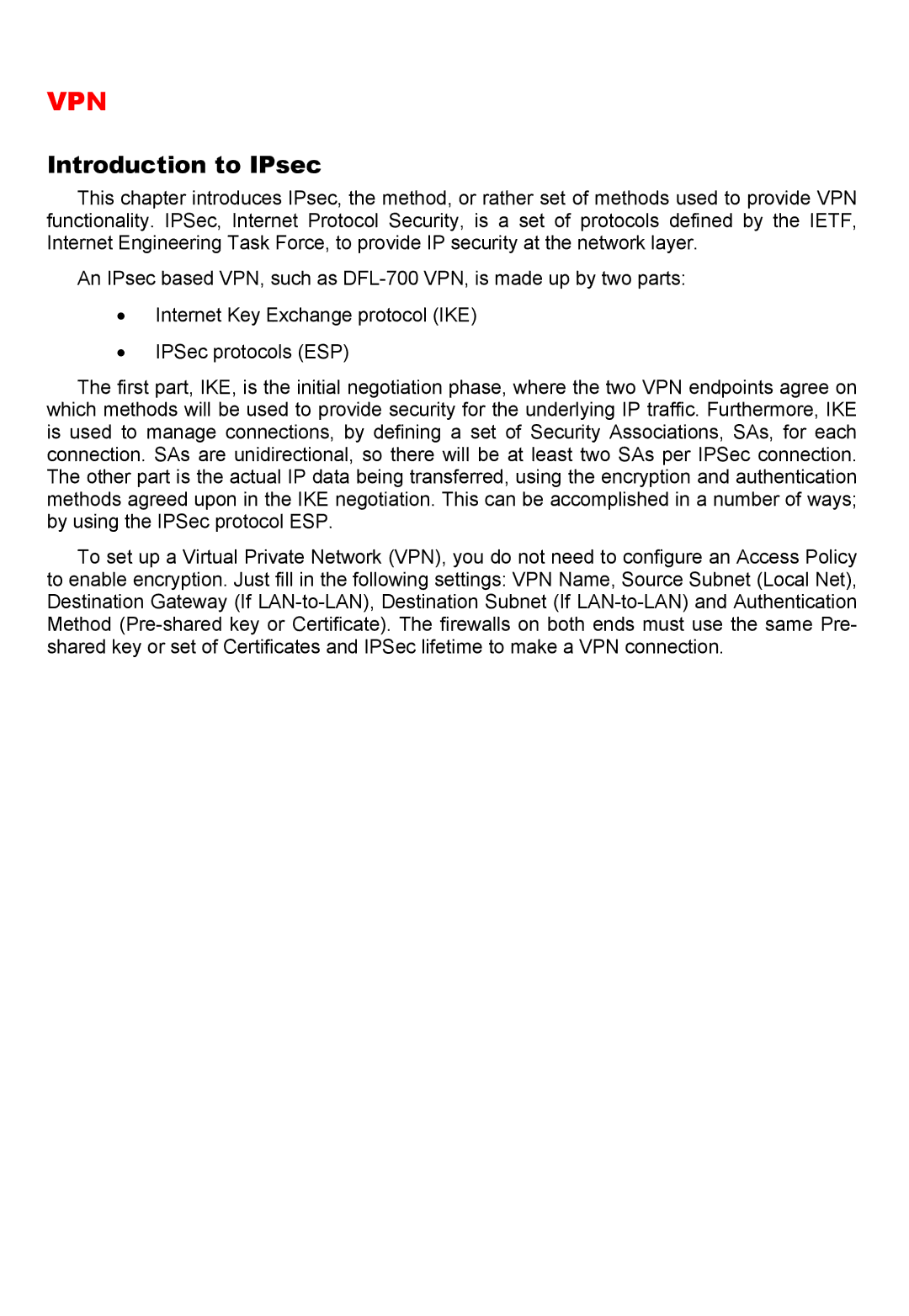VPN
Introduction to IPsec
This chapter introduces IPsec, the method, or rather set of methods used to provide VPN functionality. IPSec, Internet Protocol Security, is a set of protocols defined by the IETF, Internet Engineering Task Force, to provide IP security at the network layer.
An IPsec based VPN, such as
•Internet Key Exchange protocol (IKE)
•IPSec protocols (ESP)
The first part, IKE, is the initial negotiation phase, where the two VPN endpoints agree on which methods will be used to provide security for the underlying IP traffic. Furthermore, IKE is used to manage connections, by defining a set of Security Associations, SAs, for each connection. SAs are unidirectional, so there will be at least two SAs per IPSec connection. The other part is the actual IP data being transferred, using the encryption and authentication methods agreed upon in the IKE negotiation. This can be accomplished in a number of ways; by using the IPSec protocol ESP.
To set up a Virtual Private Network (VPN), you do not need to configure an Access Policy to enable encryption. Just fill in the following settings: VPN Name, Source Subnet (Local Net), Destination Gateway (If
